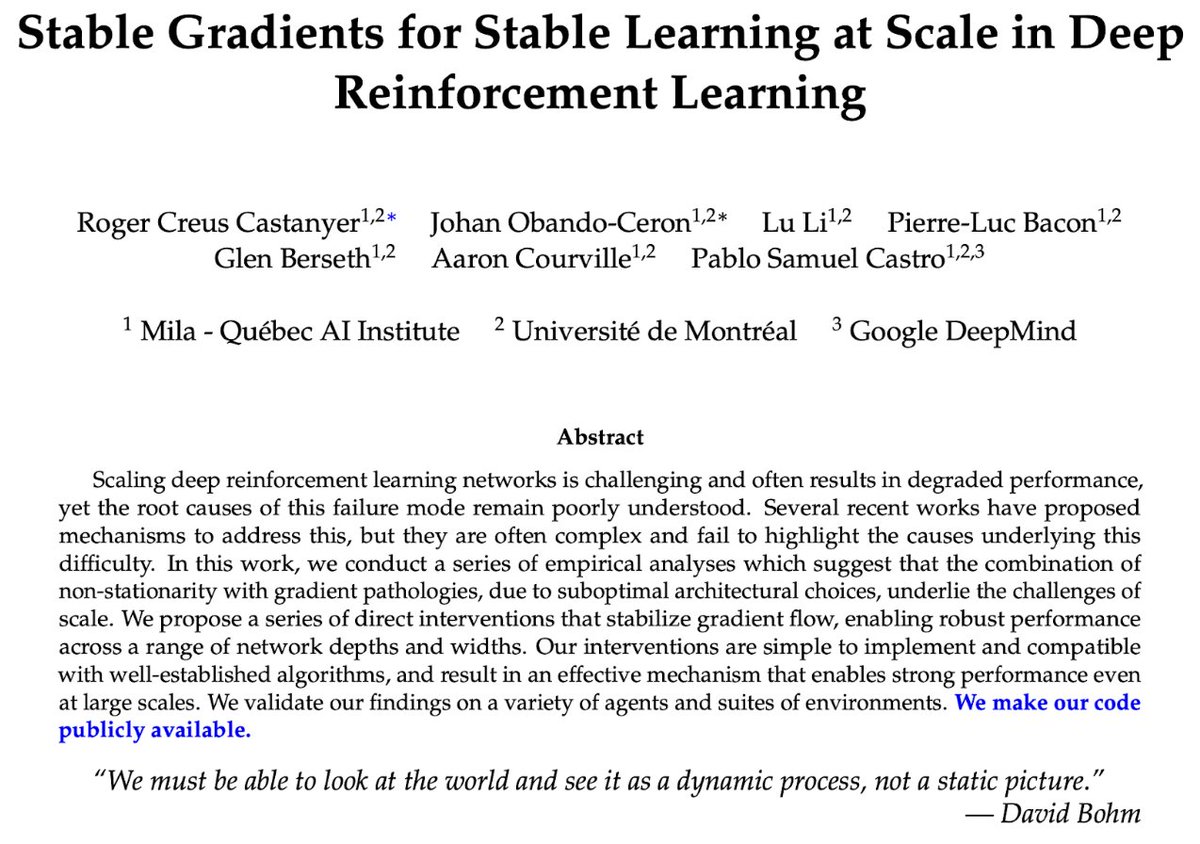
Roger Creus Castanyer
@creus_roger
Followers
603
Following
913
Media
43
Statuses
234
Maximizing the unexpected return. PhD student @Mila_Quebec | Prev: @UbisoftLaForge @la_UPC @HP
Montréal, Québec
Joined April 2021
RT @tanghyyy: (1/8)🔥Excited to share that our paper “Mitigating Plasticity Loss in Continual Reinforcement Learning by Reducing Churn” has….
0
10
0
RT @MartinKlissarov: As AI agents face increasingly long and complex tasks, decomposing them into subtasks becomes increasingly appealing.….
0
63
0
RT @akhil_bagaria: New paper: skill discovery is a hallmark of intelligence--identify interesting questions about the world, and learn how….
0
16
0
RT @pcastr: proud to share a survey of state representation learning in RL that my student ayoub echchahed and i prepared, that was just pu….
0
15
0
RT @GlenBerseth: Being unable to scale #DeepRL to solve diverse, complex tasks with large distribution changes has been holding back the #R….
0
9
0
RT @pcastr: really excited about this new work we just put out, led by my students @creus_roger & @johanobandoc , where we examine the chal….
0
10
0
This work was a fantastic collaboration with @johanobandoc,@luli_airl, @pierrelux, @GlenBerseth, @AaronCourville, @pcastr 🙌. 📄 Paper: 💻 Code:
0
0
4
RT @harshit_sikchi: Behavioral Foundation Models (BFMs) trained with RL are secretly more powerful than we think. BFM’s directly output a p….
0
44
0
RT @wang_jianren: (1/n) Since its publication in 2017, PPO has essentially become synonymous with RL. Today, we are excited to provide you….
0
80
0
RT @gan_chuang: 🤖Can world models quickly adapt to new environments with just a few interactions? . Introducing AdaWorld 🌍 — a new approac….
0
36
0










